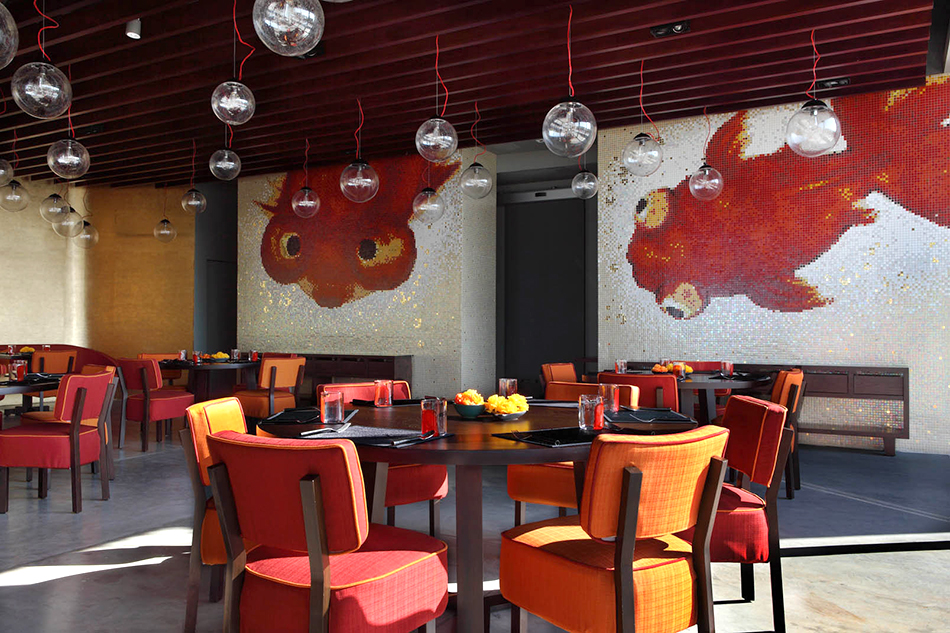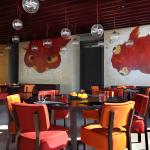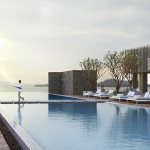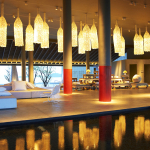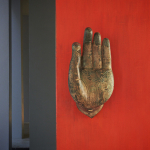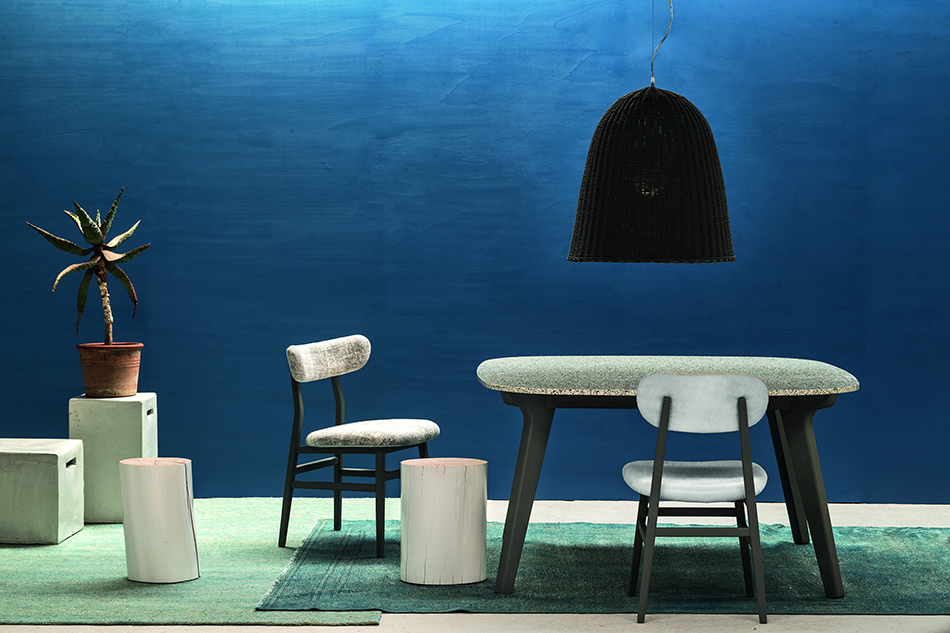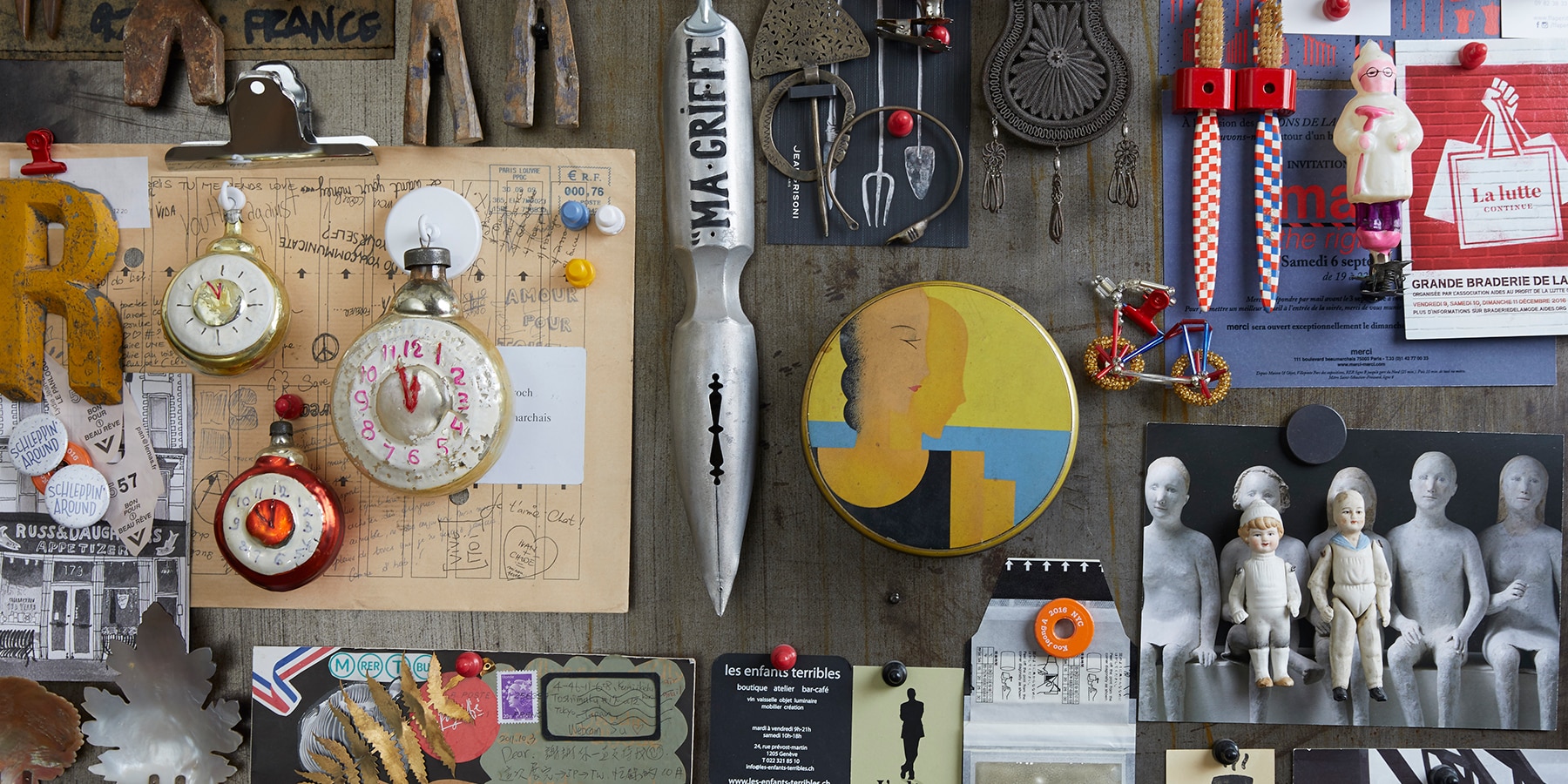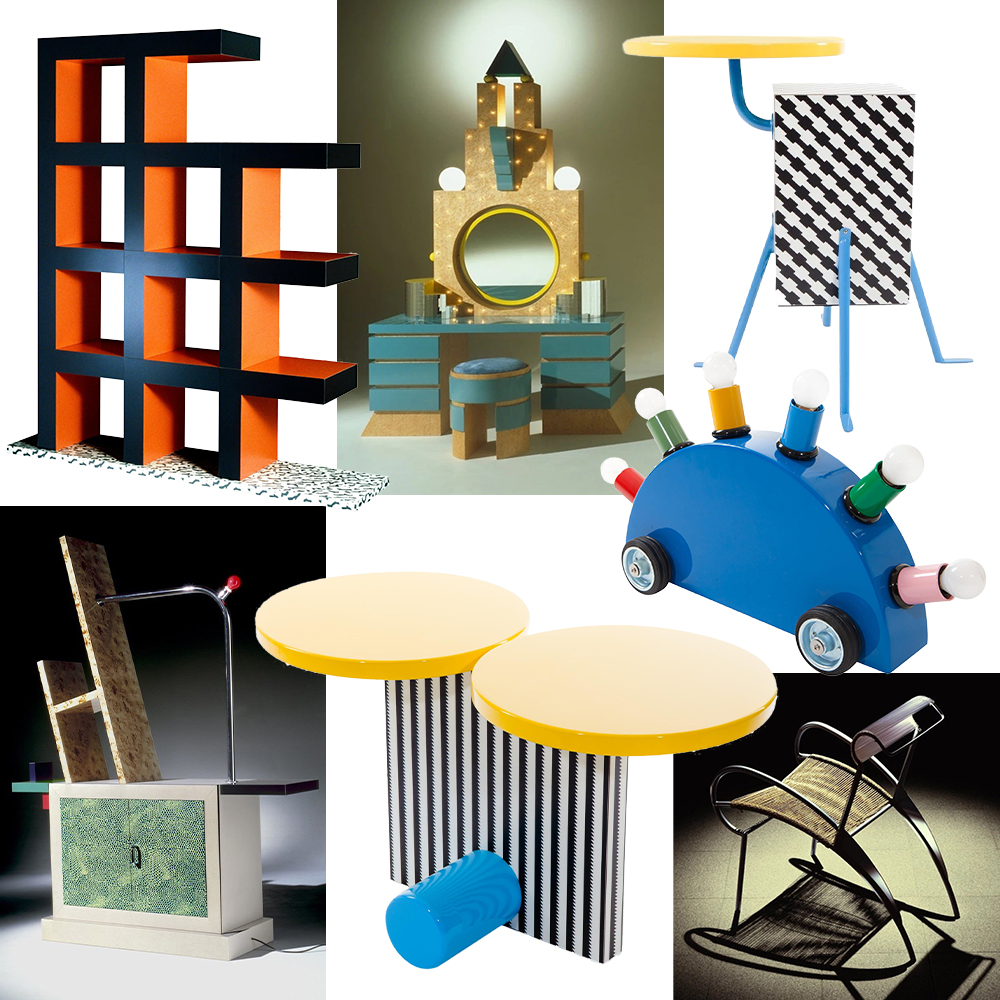It’s one of those iconic Thai views: a panorama of Phang Nga Bay’s sculptural limestone islands rising from turquoise water, just off the coast of Phuket. Traditional painted fishing boats bob on the gentle waves, while the occasional cloud drifts across a cerulean sky.
Set against this stunning backdrop, atop a promontory overlooking the Andaman Sea, the months-old Point Yamu by COMO resort represents a bold step away from the more typical tropical-wood villa complexes that otherwise dominate the scene here. It confounds design expectations from the moment one sees its gleaming modernist blocks of white concrete, and the interior is clearly the work of an experienced design hand.
The hand in question? It’s that of Paola Navone, a Turin-born, Milan-based designer who lived and worked in Southeast Asia for much of the 1980s and ’90s.
Christina Ong, the famed fashion retailer and hotelier behind COMO Hotels and Resorts, first met Navone through a friend of a friend — many of the designer’s commissions come about this way — and felt immediately that Navone’s previous work in the region made her the perfect choice to create the interiors for the somewhat severe concrete structure that already existed on the site. And Navone was only too happy to return to the area after more than a decade spent working back in Europe.
At Point Yamu, she turned the typical Thai design vernacular on its head: Where most Phuket properties have open-air pavilion-like check-in areas, Yamu has a concrete hanger-style lobby with imposing columns, slightly softened by pops of saffron at their base (a nod to the robes of the local Buddhist monks). And instead of hidden wood-decked pathways connecting the various buildings, cathedral-height hallways with polished concrete floors link the resort’s many common areas and its epic, 100-meter-long pool, which stretches across the terrace of the property with views over the bay.

Exterior corridors decoratively encased in a lattice design connect the common areas at Point Yamu.
Examples of smart repurposing abound: Oversize Thai lobster traps hang upside down as lanterns; a recycled tree trunk serves as the resort’s reception desk; antique burnished-metal Buddha hands, which Navone found at a market in Bangkok (and which originally were part of religious icons), have been repurposed as handles on bright red doors.
In the mostly white guest rooms, Navone used a variety of materials — from mosaic tiles and white-washed brick to brushed fabrics in creamy hues — to create a sense of texture, and she added accents of blue and green to forge a connection with the sea. As Navone explains when we meet for a recent dinner in Bangkok, “My objective was to create spaces with a contemporary image but that also remain connected to a Thai context.”
Navone is dressed in striking fashion, wearing round glasses and a batik-print pantsuit from Bali that few others could pull off. Heavy necklaces drape from her neck, and bangles crowd her wrist, mementos, she tells me, of her many journeys through the region. “It was a pleasure to go back and rediscover artisans whom I could work with on this project,” she enthuses. “And all the textiles!”
The 64-year-old Navone graduated from the Politecnico di Torino in 1973 with a degree in architecture and then went on to work with Alchimia, a cutting-edge experimental design group in Milan whose members also included Alessandro Mendini and Andrea Branzi. “At that time there was no real degree in interior design, just architecture,” explains Navone. “But we wanted to get out of rigid academic definitions and make architecture a more organic and all-inclusive pursuit.”
After a few years with the Alchimia group, Navone struck out on her own, launching her solo career in Italy designing products for such major brands as Cappellini and Alessi. This secured her reputation at home, with international recognition following after she won the Osaka International Design Award in 1983 for her work with a major Italian laminate producer.

A selection of flatware from Navone’s Como collection for Crate & Barrel (photo courtesy of Crate & Barrel).
While she may not be a household name in the United States — not yet, anyway — in Europe she is one of the most successful avant-garde designers working today. The more than 200 products she has created range from an early-career tabletop collection for Driade, which comprised plates and cutlery decorated with swirling patterns of blue and white, to her popular oversized sofas for Poliform. (Playing with proportions has become a leitmotif in her work: She won the 2010–2011 Elle Decor International Design Award for her whimsical Alice in Wonderland-esque Big Bed for Poliform.) And in the ’80s, Giorgio Armani asked her to oversee the sleek debut collection of his home line, Armani/Casa.
More recently, Navone launched a collaboration with Crate & Barrel that began in 2012 with a line called “Dinner with Friends.” Navone conceived the collection, she explains, as “quite literally everything you might need if you wanted to create a perfect evening of entertaining with an intimate group.” And, indeed, it features items that range from tablecloths to chairs, including highball glasses rimmed with a color Navone calls “Como blue,” cocktail snack dishes shaped like oversized silver spoons and playful white plates adorned with just a splash of color or pattern, like painted canvases.
Other U.S. projects are rapidly coming to fruition. This spring saw the opening of another hotel collaboration with Ong, the Metropolitan by COMO, Miami Beach, in an Art Deco South Beach landmark. More about grown-up style than the party-ready design gimmicks of many other hotels in the city, Navone’s vision for the guest rooms here features a subdued palette of creams and sea-foam greens, plus a mix of subtle geometric patterns alongside simple beds and other clean-lined furniture. Richard Branson, meanwhile, called on her to create a secluded green space for the rooftop lounge of his first-ever Virgin-branded hotel, which will open in a 26-story landmarked building in Chicago this fall.
But her 12-person studio tackles more than product and hospitality design, taking on four to six residential projects a year. “I count on her use of color and simplicity,” says former Armani executive Giuseppe Brusone, who recently hired Navone to design his Milan pied-à-terre, so pleased was he with her work on his home in Tuscany. There, in the pristine Crete Senesi region, she helped him transform a near-ruin into what is now one of the area’s most lovely residences. Navone made the original architectural elements of the building — arches, stone walls — less monastic by adding bold modern gestures: huge, one-of-a-kind chandeliers as well as deep-blue and terra-cotta accent colors.
“She has an innate sense of what pieces to use and where,” Brusone says, summing up not just his own residences but every project Navone tackles. “It’s the details that create great sophistication.”


